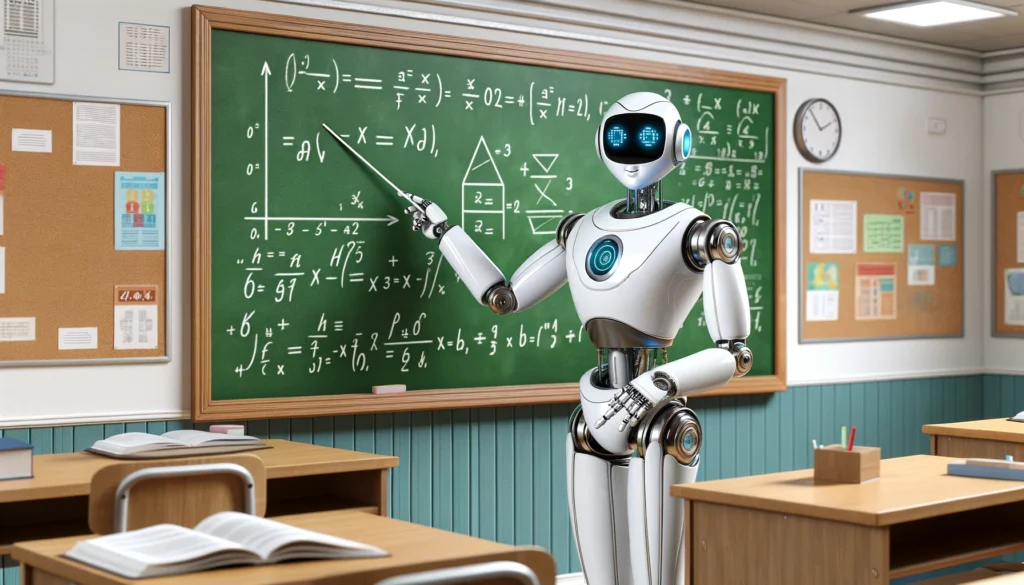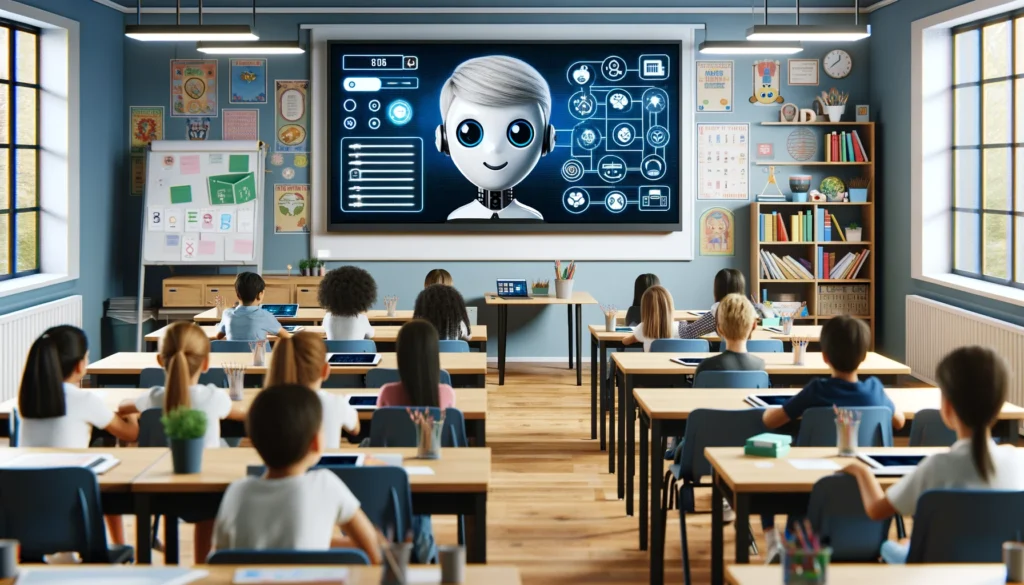Introduction

AI is rapidly transforming various sectors, with education being one of the most impacted. The integration of AI in education is revolutionizing traditional learning methods, offering personalized experiences, enhancing administrative efficiency, and ensuring inclusive access to quality education. Instruments such as an AI essay writing tool enable students to create AI essays easily, acting as an essay maker for generating academic papers. These automatic systems, which include an AI-based write bot, are available online, allowing for generated content efficiently and effectively.
This article explores the latest AI-driven tools and strategies in education, providing deep insights and expert opinions on how AI is reshaping the educational landscape.
Personalized Learning Experiences
Personalized learning is an educational approach that tailors instruction to meet the individual needs, skills, and interests of each student. AI plays a crucial role in facilitating personalized learning by using data and algorithms to create customized educational experiences. This section delves into how AI-powered adaptive learning systems and intelligent tutoring systems are enhancing personalized learning.
Adaptive Learning Systems
Adaptive learning systems use AI algorithms to tailor educational content to the individual needs of each student. These systems analyze data on student performance to provide customized learning paths, ensuring that students receive the right level of challenge and support.
- Real-time feedback and assessment: Adaptive learning systems provide immediate feedback on student performance, allowing students to understand their mistakes and correct them in real-time. This instant assessment helps keep students engaged and focused on their learning goals.
- Personalized lesson plans: These systems create individualized lesson plans based on each student’s strengths, weaknesses, and learning pace. By catering to the unique needs of each student, personalized lesson plans enhance learning efficiency and effectiveness.
- Continuous monitoring of student progress: Adaptive learning systems continuously track student performance and progress. This ongoing monitoring allows the system to adjust the difficulty level of tasks and provide targeted interventions when needed, ensuring that students stay on track and achieve their learning objectives.
“Adaptive learning systems are pivotal in addressing the diverse learning needs of students. They not only enhance engagement but also improve learning outcomes by providing personalized support,” says Dr. Emily Johnson, an education technology expert.
Intelligent Tutoring Systems
Intelligent tutoring systems (ITS) provide one-on-one instruction by simulating the behavior of a human tutor. These systems can offer personalized assistance, answer questions, and provide explanations based on the student’s learning style and pace. Key features of ITS include:
- Interactive problem-solving sessions: ITS engage students in dynamic problem-solving activities, allowing them to apply concepts in real-time and receive guidance tailored to their individual needs.
- Immediate feedback and hints: These systems provide instant feedback and hints, helping students correct errors and understand concepts more deeply without waiting for traditional grading.
- Adaptive difficulty levels: ITS adjusts the complexity of tasks based on the student’s performance, ensuring that learners are neither overwhelmed nor under-challenged, promoting optimal learning growth.
In regions like Asia and Africa, educational systems face numerous challenges, including large class sizes, limited resources, and varying levels of teacher expertise. Adaptive learning and ITS can address these issues by providing scalable and personalized education solutions that accommodate diverse learning needs, thus bridging the educational gap in these regions.
“ITS is a game-changer in education. They offer scalable personalized tutoring that can significantly improve student understanding and retention of complex concepts,” notes Dr. Michael Lee, an AI in education researcher.

Enhancing Administrative Efficiency
Administrative efficiency is critical for the smooth operation of educational institutions. AI technologies are automating various administrative tasks, allowing educators to focus more on teaching and less on bureaucratic processes. This section explores how AI is improving administrative efficiency in education.
Automated Administrative Tasks
AI-powered tools are streamlining administrative tasks such as grading, scheduling, and resource allocation. By automating these processes, educators can focus more on teaching and less on administrative burdens. Key features of these AI-powered tools include:
- Automated grading systems: These systems use AI algorithms to assess student assignments quickly and accurately, providing immediate feedback and reducing the time teachers spend on grading.
- Intelligent scheduling algorithms: AI-driven scheduling tools optimize timetables by considering various constraints and preferences, ensuring efficient use of time and resources.
- Resource management tools: These tools help allocate educational resources effectively, ensuring that materials, equipment, and staff are utilized optimally to support learning objectives.
“Automation of administrative tasks through AI not only reduces workload but also minimizes human error, leading to a more efficient and effective educational environment,” says Sarah Martinez, an educational administrator.
In many parts of Asia and Africa, schools face significant administrative challenges due to limited funding and staff shortages. AI-driven automation can alleviate some of these pressures by streamlining administrative processes, ensuring that resources are used efficiently, and allowing educators to dedicate more time to student instruction and support.
Ensuring Inclusive Access
Ensuring inclusive access to education is a fundamental goal for educators worldwide. AI technologies are making significant strides in providing educational opportunities for students with special needs and those in underserved regions. This section discusses how AI is contributing to inclusive education.
AI for Special Education
Learners with specific needs are finding new opportunities with the help of artificial intelligence technology. Tools like the best AI for proposal writing that help students overcome barriers to their education, including voice recognition, text-to-speech, and predictive text, are improving accessibility. Following are a few of the most salient features of these AI systems:
- Students who have trouble hearing or speaking may take part in class discussions and activities to a greater extent with the help of speech-to-text and text-to-speech programs.
- Students who struggle with writing might benefit from predictive text tools driven by artificial intelligence. These programs propose words and phrases to help students write more efficiently and accurately.
- Artificial intelligence (AI) offers personalized learning tools and tactics to address the unique challenges faced by children with a wide range of impairments. This personalized approach guarantees that these kids get the necessary assistance to excel academically.
In Asia and Africa, it can be hard to get special education services because there aren’t enough trained workers and specialized tools. AI can help close this gap by providing scalable solutions that give students with disabilities individualized help, making sure they get the education they deserve.
An expert in special education, Dr. John Smith, says that AI could help close the gap in special education by giving each student the support and mobility tools that are best for them.
Case Studies
Looking at how AI is used in education in the real world can teach us a lot about its effects and usefulness. Case studies that show how AI technologies have been used successfully in schools are shown in this part.
AI in public school K–12: A K–12 school system used an adaptive learning tool to tailor math lessons to each student in a pilot program. Students’ success and interest in learning went up a lot, especially those who had been having trouble with math before.
AI in College and University: For its computer science classes, a university set up a clever teaching system. Students were happier and more likely to pass because the method gave them personalized help and practice tasks.
AI is making big changes in education by providing unique learning experiences, improving the speed of administration, and making sure that everyone has access to a good education. As AI technologies improve, they have the potential to completely change education. This could lead to a world where learning is more flexible, quick, and open to everyone.
To fully understand how AI-driven innovations can change education, educators, administrators, and lawmakers must accept them. The future of education will depend on how much money is put into AI research and development and how carefully it is used. |